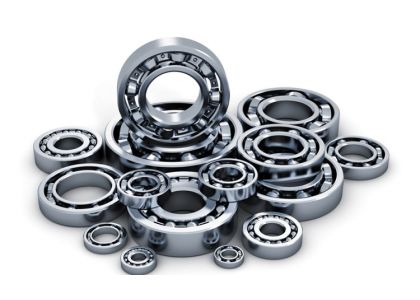INDUSTRY NEWS
Unleashing the Potential of Bearings: The Latest Trends in the Industry

Introduction:
Within the realm of machinery and engineering, bearings are the unsung heroes that enable smooth and efficient movement. As technology continues to advance at an unprecedented pace, the bearing industry is also witnessing transformative breakthroughs. In this article, we will explore the latest trends and developments in the world of bearings, revolutionizing industries ranging from automotive to renewable energy.
1. Smart Bearings: A Paradigm Shift Towards Industry 4.0
The advent of Industry 4.0 has brought forth a new era of smart manufacturing, and bearings are no exception. Companies are integrating sensor technologies directly into bearings, allowing for real-time monitoring and analysis of crucial performance data.
These smart bearings provide valuable insights on factors such as temperature, vibration, and load distribution. By harnessing the power of Artificial Intelligence (AI) and Machine Learning (ML), engineers can predict maintenance requirements, prevent failures, and optimize the overall system performance. This shift towards smart bearings enhances productivity, reduces downtime, and prolongs the lifespan of machinery.
2. Lightweight and High-Performance Materials
The demand for lightweight and high-performance bearings is steadily growing across industries such as aerospace and automotive. To meet this demand, manufacturers are turning to advanced materials such as composites and ceramics.
Composites offer excellent strength-to-weight ratios, reducing the overall weight and enhancing fuel efficiency. Ceramics provide exceptional resistance to heat and wear, making them ideal for high-speed applications. These materials, coupled with innovative manufacturing techniques, result in bearings that offer enhanced durability, reduced friction, and improved energy efficiency.
3. Sustainability: Green Bearings for a Greener Future
In an increasingly eco-conscious world, the bearing industry is actively pursuing sustainable practices. Companies are employing various strategies to reduce their environmental impact and create greener bearings.
One such strategy involves using eco-friendly lubricants made from biodegradable materials. These lubricants not only reduce friction but also minimize the release of harmful substances into the environment. Additionally, manufacturers are implementing recycling programs to recover and reuse bearings at the end of their lifecycle, further reducing waste and conserving resources.
4. Three-Dimensional (3D) Printing for Customization and Efficiency
The rise of 3D printing has revolutionized the manufacturing process, and the bearing industry is embracing this technology to its advantage. 3D printing enables designers to create complex geometries and customized bearing solutions that were previously unattainable.
Manufacturers can now produce prototypes rapidly, iterate designs efficiently, and optimize bearing performance based on specific requirements. This customization not only improves overall efficiency but also opens up new possibilities for innovative designs in various applications.
Conclusion:
As technology continues to push boundaries, the bearing industry is undergoing a remarkable transformation. From the integration of smart technology and advanced materials to sustainable practices and 3D printing, these trends are reshaping the future of bearings. By embracing these developments, industries can benefit from improved performance, increased efficiency, and reduced environmental impact.
As we navigate the ever-evolving landscapes of automation, sustainability, and customization, the potential of bearings to drive progress and innovation remains limitless.